Broccoli is a delicious member of the Brassica family and is packed with healthy vitamins. It requires very little care throughout the growing season. Broccoli can be grown twice a year, in late spring and autumn. Broccoli is a cold-season vegetable. Therefore, it should be applied in the year’s colder months for best results.
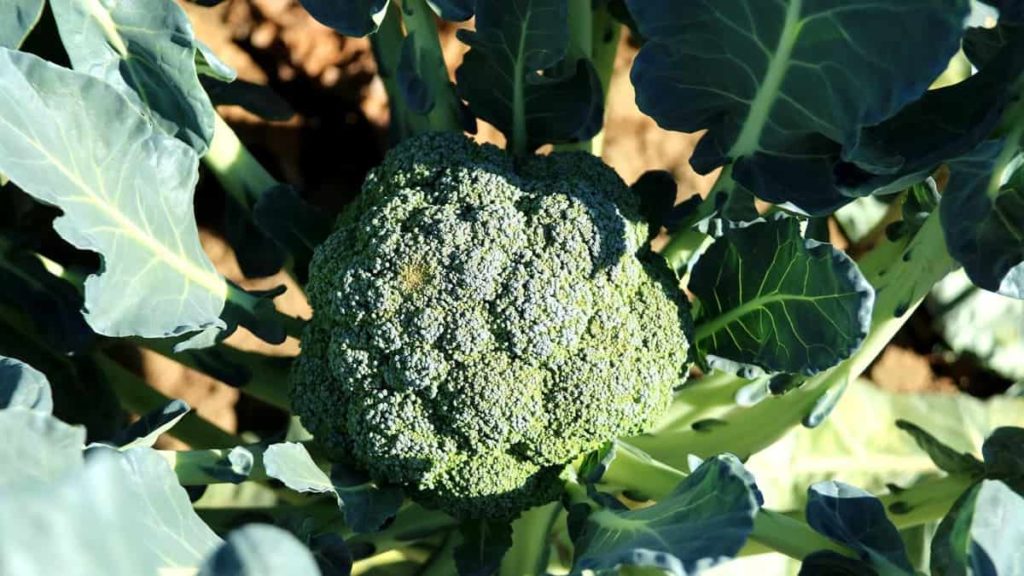
The growth of the Broccoli plant will be affected by the high temperatures of the summer months. Broccoli is an annual herbaceous or biennial herb grown for its flower heads and used as a vegetable. The Broccoli plant has a dark green stalk, or stem, which gives rise to thick, leathery, long leaves ranging from gray to blue to green. The plant produces many large, branched green flower heads covered with white or yellow flowers. Here are some common tips and steps most people use to get more Broccoli yield.
Top 16 steps/ways to boost Broccoli yield
Step 1) Select high yielding Broccoli varieties
Some high-yielding varieties are Calabrese, Black Broccoli, Green Goliath, Purple Cap Broccoli, White Sprouted Broccoli, Palam Samridhi, Punjab Broccoli-1, Roylegreen, Evergreen, Danube, Yugren, Salinas Pilgrim, Green Mountain, and Central, Premium Crop, Premium Pusa Broccoli. Choose a variety of Broccoli that suits your climate;
- Imperial: Grows best in hot weather. Growth slows down as the temperature cools.
- Green Magic: It tolerates hot temperatures; A small plant with smooth heads.
- Calabrese: Italian heritage with a large head and many side shoots. This variety has large heads and performs well with autumn planting.
- Belstar: A heat-tolerant variety with many sides shoots that grow well in mild winters.
- Green Magic: This type is heat tolerant.
- Green Goliath: It has good heat tolerance and very large heads.
- Flash: This type is known for its relatively fast growth rate.
Step 2) Land preparation for Broccoli growth
The first basic thing every Broccoli grower should know to grow Broccoli is to start preparing the land a few weeks before showing the seeds. All Broccoli growers remove all weeds from the field, plowing twice to three times to improve soil aeration and drainage. It is essential because we can grow Broccoli as an annual plant indoors and outdoors. If you plan to farm outside, this can be done either in early spring or fall.
If you plant them in the spring, they will be ready for harvest in the summer. On the other hand, planting in the fall will make Broccoli ready for harvest in the winter season. Choose a land with full sunshine as lack of sunlight can cause many disorders in Broccoli, such as thin-leggy plants and sub-heads. To increase soil fertility, combine soil with basal fertilization with organic-rich compost and crop boosters.
In case you missed it: Growing Broccoli in Greenhouse – Planting, Farming
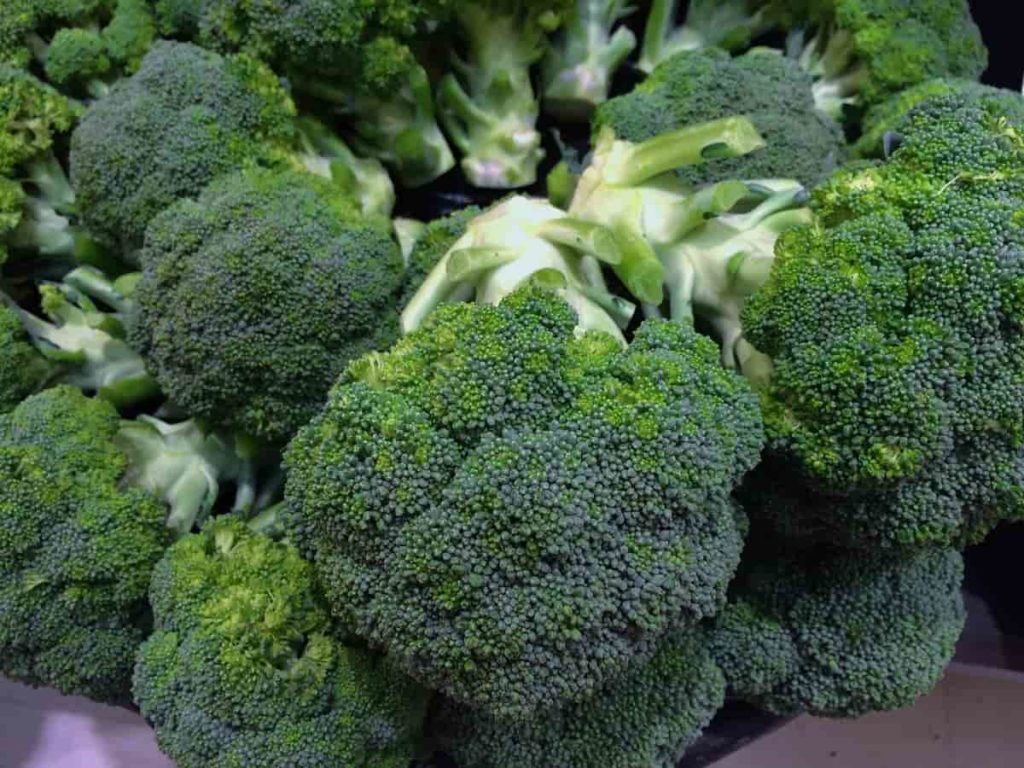
Because Broccoli is a cold-season crop, it is usually planted in the spring. It would help if you started planting when the soil temperature reaches at least 10°C and the possibility of hard frosts passing in your area. Flower heads (edible part of Broccoli) thrive against ambient temperature. In the summer heat, Broccoli heads ripen in July faster than heads ripened in cold spring (4-6 days). The Broccoli heads should be closed and hard (no yellow petals are visible) to be considered good quality.
Step 3) Plant in rich, tight soil for best growth
Broccoli needs a lot of nutrients, so be generous with compost and balanced organic fertilizer when preparing the planting space. Large Broccoli plants flutter in the wind, but only when firmly anchored in their favorite soil type, a soil-based loom with a dense, almost neutral pH. It can grow in various soils, but clay loam and sandy loom soils are best for Broccoli cultivation. Most farmers use slightly acidic soils for growing Broccoli, which has a pH range of 6 to 7.
It would not recommend choosing alkaline soils because some soil conditions can cause root cancer in plants, affecting plant growth and productivity. Also, Club Root is caused by a pathogen called Plasmodiophora brassicae. When growing plants in acidic soil, the plant can tolerate soil and water with high salinity levels. Farmers and many agronomists recommend using pre-planted fertilizers for the proper growth and development of plants, such as well-decomposed organic fertilizers or slow-release fertilizers.
After preparing the field, made rows 70-80 cm (27.5-31.5 inches) apart. Make sure the soil is well-drained and very fertile. If your soil test shows that you have poor quality soil, or if your soil drainage is very poor, there are several things you can do to prepare your garden for planting Broccoli:
- If your soil is flooded, consider making a garden box to lift your soil off the ground. If possible, use cedar wood to make your planter box, as it does not rot when exposed to water.
- Add up to four inches of solid fertilizer to your soil to increase soil fertility. If soil is in poor condition, add organic fertilizers with high nitrogen to enrich the soil.
- Organic fertilizers such as alfalfa, cottonseed meal, and manure are good choices for Broccoli.
In case you missed it: Organic Broccoli Cultivation, and Growing Practices
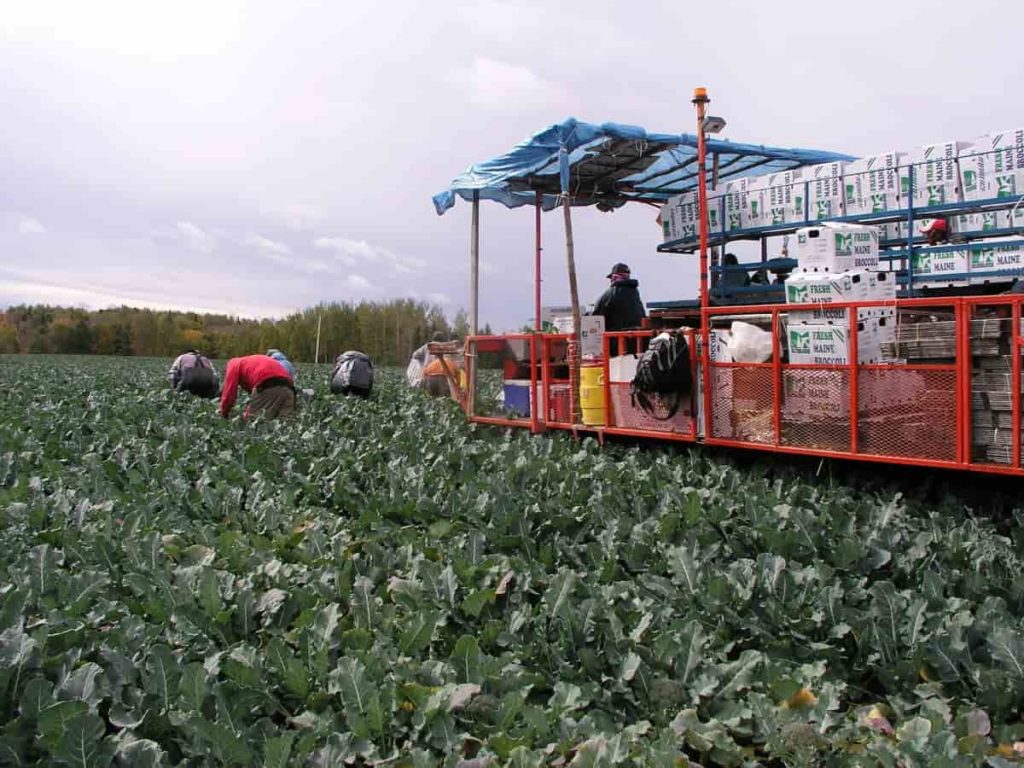
Step 4) Broccoli seed germination tips for better yield
Broccoli seeds usually germinate in 10 to 14 days. This germination period is measured from the initial planting to forming the first set of real leaves rather than radical. Broccoli seeds can be germinated outdoors or started indoors and transplanted after they have grown.
Step 5) Water management to improve crop yield and quality
Drip irrigation is very beneficial for Broccoli crops. It improves crop yield and quality. Depending on the weather conditions, light and frequent irrigation should be done after 10-15 days intervals, and soil moisture should be maintained around the roots.
Step 6) Fertilizer management for better growth
Before fertilizing the Broccoli crop, the soil should be analyzed, and then the amount of fertilizer should be determined. Before planting, add plenty of compost, blood feed, or cotton seed feed to the soil. Consider watering with fish emulsions or other organic fertilizers every three to four weeks during the growing season.
It usually needs 150 kg nitrogen, 100 kg phosphorus, and 170 kg potassium per hectare. At the time of transplantation, 120 kg of nitrogen, 80 kg of phosphorus, and 60 kg of potash should be added. Then, use the remaining half nitrogen in two divided doses about 30 and 45 days after transplantation. Provide micronutrients as required by the crop. The Broccoli plant has a congenital deficiency, so if it appears in the field, apply boron with foliar spray or water fertilizer.
Firstly, you want to keep in mind the soil condition of the field through semi-annual or annual soil testing before using any method of fertilizer application. No two fields are alike. No one can advise you on fertilizer application methods without considering your soil test data, tissue analysis, and crop history of your field. However, we will list many farmers’ most common fertilization schemes. In most cases, Broccoli requires heavy fertilizer to thrive and produce more than one head per plant.
In case you missed it: Broccoli Farming in Polyhouse for Profit – A Full Guide
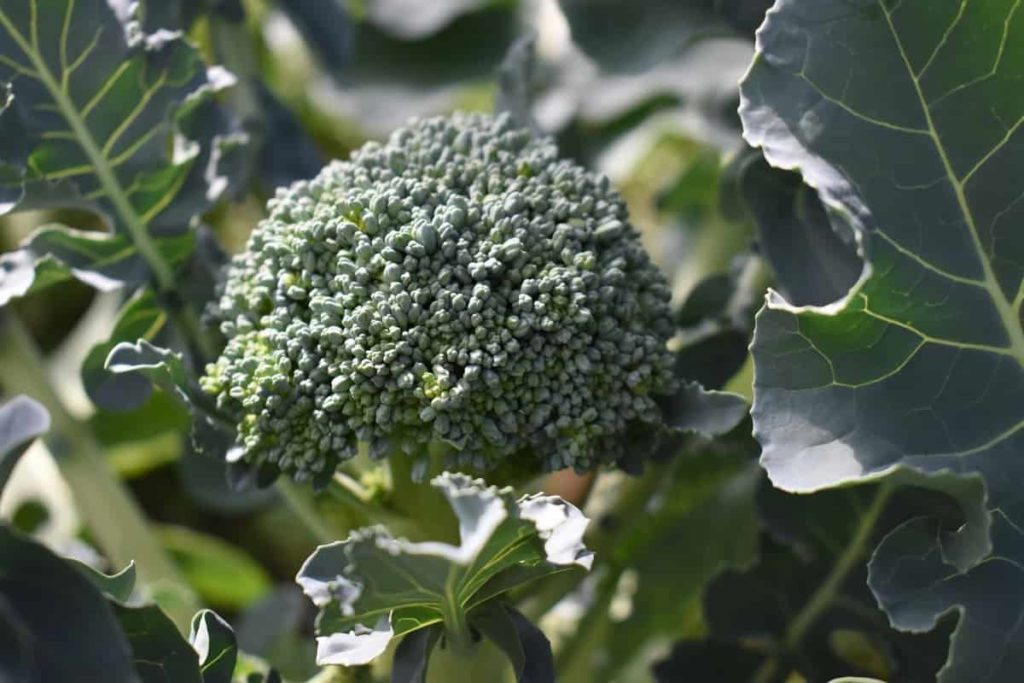
Step 7) Weed management to get more production
Weed control in the Broccoli plant can be achieved with herbicides, mechanical control, and a good crop rotation system. Broccoli competes well with weeds but should be kept free of weeds until the plants have already reached the pre-heading stage. Many pre-transplant and post-emergency herbicides are available for Broccoli, depending on the problem and the Broccoli’s growth stage.
If the level of infection is mild, cultivation can be used to reduce weed problems. Weed management 30 days after transplanting, remove the weed. This weed competes with the crop, which is important for food, sunlight, and wind, keeping the crop free from weeds. Also, rack the soil on the bed, which helps raise the oxygen level to the root zone.
Step 8) Pest and disease management for more Broccoli production
Pests and diseases are a major potential problem in Broccoli production. Some pests in the Broccoli plant are flea beetles, cabbage loopers, imported cabbage worms, diamondback moths, and aphids that damage crops. Monitoring insect populations by traps or scouting will help you determine when you should use pesticides and how often to spray. Many diseases of Broccoli can damage the crop.
Common problems in the Broccoli plant are Black rot, bacterial head rot, blackleg, downy mildew, and Alternaria. These plant diseases can be prevented by developing a good crop rotation program and using disease-resistant varieties. Many pesticides used to produce Broccoli are limited and require a pesticide applicant’s license to purchase them.
Pesticide applicant tests are usually conducted at county extension offices, so you should contact your local office for the dates and times of these tests. When using any pesticide in your enterprise, remember to follow all label recommendations regarding application rates and personal protection equipment (PPE) requirements. Ensure that Worker Protection Standards (WPS) apply to owners and employees.
Step 9) Tips for Broccoli growing taller and flowering (Broccoli bolting)
Broccoli grows taller and begins to bloom at maturity to form seeds and complete its reproductive cycle. It also occurs in response to stress and extreme soil temperatures. Sometimes, Broccoli grows long and bolted before it has a chance to grow big. The Broccoli will grow taller and flower in response: to high soil temperature (much higher than 21°C) and low soil temperature (much below 10°C).
In case you missed it: Growing Broccoli In Pots, Containers, Indoors Guide
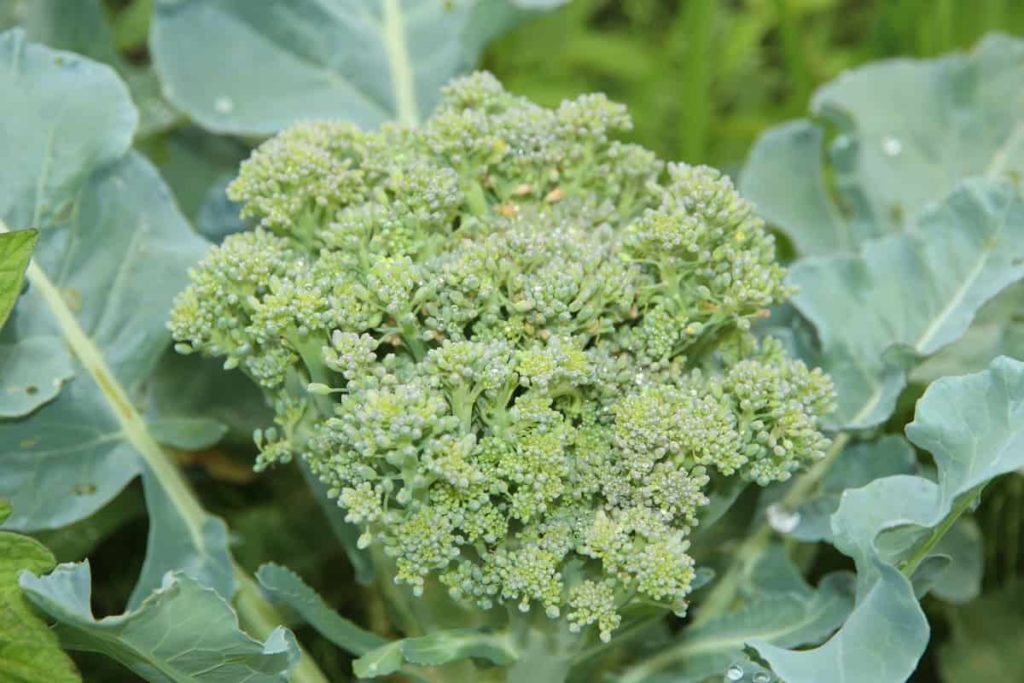
Step 10) Tips for growing large Broccoli heads
- Broccoli needs well-fertilized soil to grow correctly. Broccoli plants need their place to grow well because they are a heavy feeder.
- Applying them too close will hinder their development. Keep a plant distance of about 3 feet between rows of Broccoli plants. The Broccoli is ready to land on your plates when they become heads.
- The Broccoli plant needs many nutrients to grow as a fast-growing plant. Your plant will benefit from a monthly dose of rich manure or tea compost.
- Like other vegetables, Broccoli needs to be well hydrated. Water the plant roots to a depth of about an inch per week.
Step 11) Why isn’t my Broccoli blooming?
Timing is one of the reasons why Broccoli doesn’t have a head or a small head. Broccoli likes to be kept cool. Broccoli should be planted early spring for a summer harvest and early fall.
Step 12) Causes of small Broccoli heads
Broccoli needs constant moisture from the time of sowing to the time of harvest for easy transition from the plant stage, when the plants are growing, to the reproductive stage, when the head is formed. Irregular watering can put pressure on plants, causing them to form small, individual flowers with a bitter taste.
Step 13) Broccoli yield per hectare
After years of experience, a good yield will be 20 tons per hectare (1 hectare = 2,47 acres = 10,000 square meters). The weight of each Broccoli plant depends on the variety and growing conditions. Broccoli farming, though demanding, can offer significant profits.
Step 14) Why are my Broccoli plants so tall?
Broccoli grows taller and begins to bloom at maturity to form seeds and complete its reproductive cycle. It also occurs in response to stress and extreme soil temperatures.
Step 15) Problems and their control on the Broccoli leaves
Yellow color spots on the upper leaf surfaces and gray powder on the underside. If there are irregular yellow-brown spots on the upper surfaces of the leaves on your plants and also gray powder or mold on the underside, it is a sign of mold on the underside. A fungus causes the disease. To prevent this problem, you want to improve air circulation and keep your garden free of plant debris. In addition, you can choose to plant resistant varieties and rotate crops.
Pale yellow leaves – If the leaves turn pale and yellow, and if they bend, the plant may die. It is caused by the so-called “yellow cabbage” fungus Fusarium soil. It affects plants where the soil is warm and is often spread by leafhoppers. To treat this problem, remove infected plants and control the leafhoppers. Also, ensure your garden is free of weeds, as they can prevent disease. It is essential to keep the soil evenly moist but not wet. Make sure to rotate crops.
Yellow leaves and stunted plants – This symptom shows root cyst nematodes with small shiny springs on the roots. These microscopic, insect-like animals live on a water film that wraps up dust particles. In mid-summer, solarize the soil with clean plastic and rotate the family cabbage crops to prevent this problem.
In case you missed it: Broccoli Farming; Planting; Care; Harvesting – A Full Guide
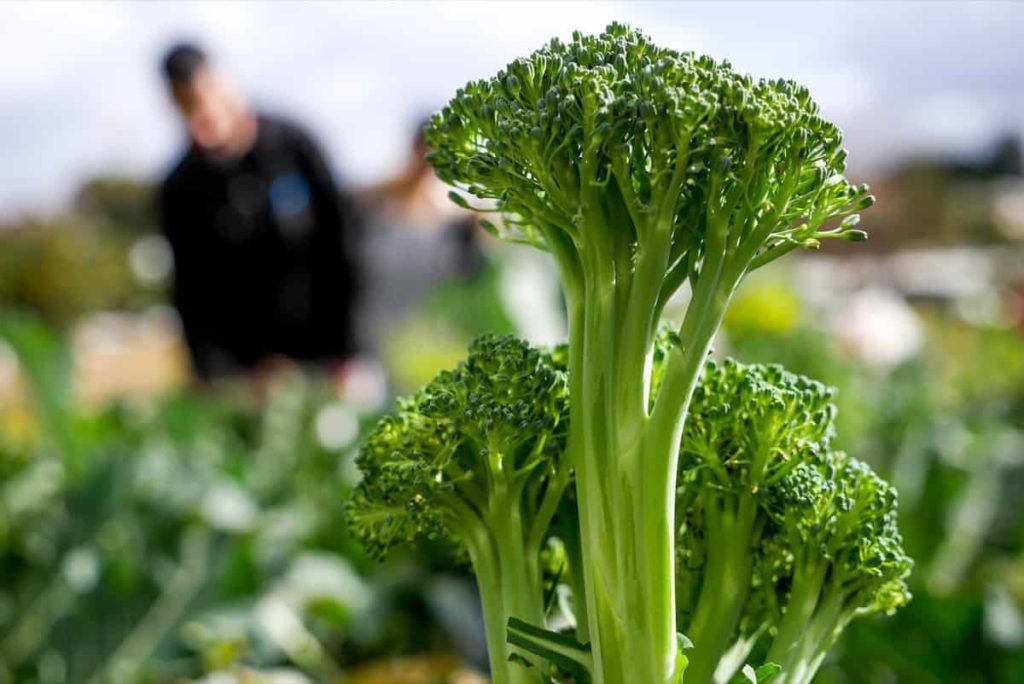
Deformed leaves with white or yellow spots – This could signify a Harlequin bug or a stink bug. The symptoms are black, with bright red, yellow, or orange color markings. Harlequin worms are insects that suck liquid from plant tissues, causing yellow and white blotches. You can handpick and destroy insects and eggs. You should keep the garden free of weeds and crop residues, as these are where these insects grow. Stink bugs are green shield-shaped insects that eat fruit. You should remove weeds and garden debris, so they do not attack your plants.
Step 16) Broccoli harvesting tips for more production
Harvest Broccoli in the morning. Cut the Broccoli before it heats up, when the buds are firm, just before the scalp swells. Most varieties of Broccoli are ready for harvest when their heads reach the size of a large fist. If you wait for too long, the buds will open. You can still eat the stalks, but they will be harder.
The best harvesting time for Broccoli is in the morning, as the head and stalks will be the strongest. Cut about 6 inches of stalks along the heads. Make an angled cut so that water does not accumulate on the cut surface and any side shoots still growing rot.
The Broccoli is ready to be harvested when the flowers are tightly closed in the middle but begin to loosen slightly around the edges. If the buds start to turn yellow, prune immediately. After that, cut the stem at an angle to prevent rot. Sometimes, the plants produce another head, so keep watering after harvesting. Broccoli heads are usually larger in fall than in the spring crop.
- Economical Aquaculture: A Guide to Low-Budget Fish Farming
- 15 Common Planting Errors That Can Doom Your Fruit Trees
- How to Make Houseplants Bushy: Effective Tips and Ideas
- Innovative Strategies for Boosting Coconut Pollination and Yield
- Pollination Strategies for Maximum Pumpkin Yield
- The Complete Guide to Chicken Fattening: Strategies for Maximum Growth
- Natural Solutions for Tulip Problems: 100% Effective Remedies for Leaf and Bulb-Related Issues
- Revolutionizing Citrus Preservation: Towards a Healthier, Greener Future
- Natural Solutions for Peony Leaf and Flower Problems: 100% Effective Remedies
- Maximizing Profits with Avocado Contract Farming in India: A Comprehensive Guide
- Natural Solutions for Hydrangea Problems: 100% Effective Remedies for Leaf and Flowers
- The Ultimate Guide to Choosing the Perfect Foliage Friend: Bringing Life Indoors
- From Sunlight to Sustainability: 15 Ways to Use Solar Technology in Agriculture
- The Ultimate Guide to Dong Tao Chicken: Exploring from History to Raising
- The Eco-Friendly Makeover: How to Convert Your Unused Swimming Pool into a Fish Pond
- Mastering the Art of Delaware Chicken Farming: Essentials for Healthy Backyard Flocks
- 20 Best Homemade Fertilizers for Money Plant: DIY Recipes and Application Methods
- How to Craft a Comprehensive Free-Range Chicken Farming Business Plan
- Brighten Your Flock: Raising Easter Egger Chickens for Beauty and Bounty
- How to Optimize Your Poultry Egg Farm Business Plan with These Strategies
- Subsidy for Spirulina Cultivation: How Indian Government Schemes Encouraging Spirulina Farmers
- Ultimate Guide to Raising Dominique Chickens: Breeding, Feeding, Egg-Production, and Care
- Mastering the Art of Raising Jersey Giant Chickens: Care, Feeding, and More
- Ultimate Guide to Raising Legbar Chickens: Breeding, Farming Practices, Diet, Egg-Production
- How to Raise Welsummer Chickens: A Comprehensive Guide for Beginners
- How to Protect Indoor Plants in Winter: A Comprehensive Guide
- Ultimate Guide to Grow Bag Gardening: Tips, Tricks, and Planting Ideas for Urban Gardeners
- Guide to Lotus Cultivation: How to Propagate, Plant, Grow, Care, Cost, and Profit
- Agriculture Drone Subsidy Scheme: Government Kisan Subsidy, License, and How to Apply Online
- Ultimate Guide to Raising Araucana Chickens: Breed Profile, Farming Economics, Diet, and Care
- Bringing Hydroponics to Classroom: Importance, Benefits of Learning for School Students
- Ultimate Guide to Raising Polish Chickens: Breed Profile, Farming Economics, Diet, and Care
- Ultimate Guide to Raising Australorp Chickens: Profile, Farming Economics, Egg Production, Diet, and Care
- Silkie Chicken Farming: Raising Practices, Varieties, Egg Production, Diet, and Care
- Sussex Chicken Farming: Raising Practices, Varieties, Egg Production, Diet and Care
- Homemade Feed Formulations for Livestock: Discover Cost-effective Starter to Finisher Feed Recipes